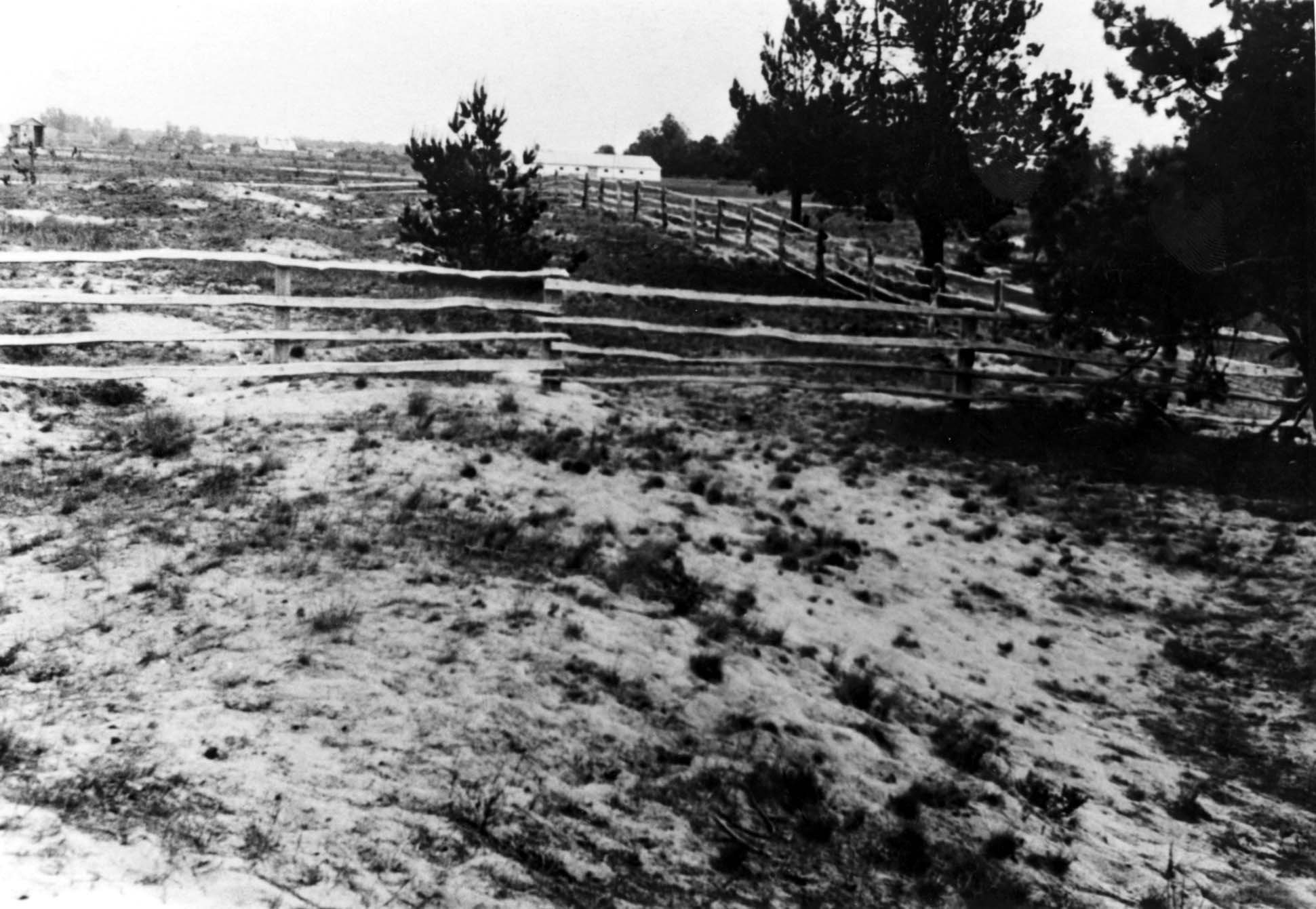
The site of the massacre of the Jews of Lenin, apparently shortly after the war
YVA, Photo Collection, 3373/14
Steblewicze / Połuściewicze Hill Related Communities
Lenin Related Murder Sites


The rest of the victims were loaded onto trucks and driven to the killing site: a hill that lay in the direction of the village of Steblewicze, opposite the fruit garden of the Agarkov farmstead (nowadays, the site lies on the northwestern outskirts of Lenin). According to other sources, the shooting site lay in the direction of the village of Połuściewicze. The total number of victims ranges from 1,100 to 1,850, depending on the document. Ditches had been dug at the killing site in advance.